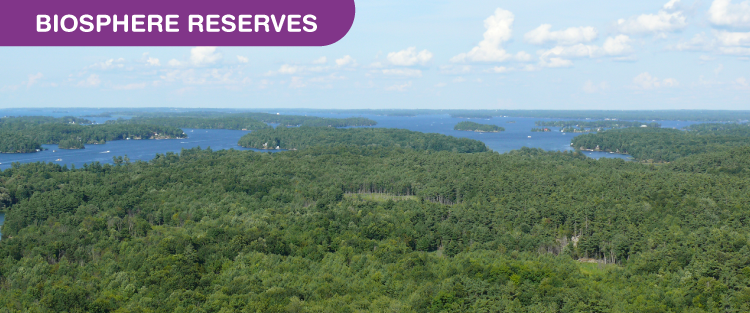
What is the Biosphere Reserve?
Biosphere reserves are the protected areas meant for the conservation of plants and animals. It also restores the traditional life of the tribals living in that vicinity. They conserve the biodiversity of that area.
There are 18 Biosphere Reserves in India established by the government that protect large areas of natural habitats. These areas are provided with the buffer zones that are open for some economic uses. Not only the flora and fauna but also the humans inhabiting these areas are protected.
The Biosphere Reserves are identified by the Man and Biosphere Reserve Program to promote sustainable development. This program was initiated by UNESCO in 1971.
This program recognizes areas which are:
-
The world’s most typical terrestrial and coastal ecosystems.
-
That exhibit approaches ton live and works in harmony with nature.
-
That demonstrates the achievement of a sustainable balance between conserving natural ecosystems and biodiversity.
Zones of Biosphere Reserve
There are three biosphere reserve zones:
- Core
- Buffer
- Manipulation
Core Zone
This is a legally protected area where human intervention is strictly prohibited.
It is the innermost undisturbed ecosystem.
The information from these areas helps to assess the sustainability of activities, or maintenance of environmental quality in the surrounding areas.
Buffer Zone
The area surrounding the core zone is the buffer zone.
Here only the research and education activities are permitted to humans. These activities should not obstruct the conservation objectives of the core area.
This area also includes activities that help to manage natural vegetation, agricultural land, fisheries, or forests to enhance the quality of production.
This zone might also include recreation and tourism facilities. Human activities are less intensive in this zone as compared to the transition zone.
Manipulation Zone
It is the peripheral area of a biosphere reserve where human activities like cropping, recreation, forestry, and settlements are permitted with the cooperation of reserve management and local people. Through these activities, the degraded area is resumed to its natural form.
The local communities, scientists, conservation agencies, cultural groups, and other stakeholders work in this zone to use the area in a sustainable way for the welfare of humans living there.
Biosphere Reserves in India
Biosphere Reserves in India are as under:
| Name of Biosphere Reserves | States |
| Nilgiri Biosphere Reserve (2000) | Tamil Nadu, Kerala, Karnataka |
| Sundarbans Biosphere Reserve (2001) | West Bengal |
| Gulf of Mannar Biosphere Reserve (2001) | Tamil Nadu |
| Nanda Devi Biosphere Reserve (2004) | Uttarakhand |
| Simlipal Biosphere Reserve (2009) | Odisha |
| Pachmarhi Biosphere Reserve (2009) | Madhya Pradesh |
| Nokrek Biosphere Reserve (2009) | Meghalaya |
| Achanakmar-Amarkantak Biosphere Reserve (2012) | Chhattisgarh, Madhya Pradesh |
| Great Nicobar Biosphere Reserve (2013) | Great Nicobar |
| Agasthyamalai Biosphere Reserve (2016) | Kerala and Tamil Nadu |
| Khangchendzonga National Park (2018) | Sikkim |
Importance of Biosphere Reserves
The importance of biosphere reserves is mentioned below:
Conservation
Biosphere reserves conserve the species, ecosystems, genetic diversities, and landscapes without affecting the inhabitants.
Development
It ensures sustainable developments including economic, cultural, social and economic developments.
Restoration
The biosphere reserves restore any damage caused to the ecosystems and habitats.
Education and Research
These areas provide a lot of information on how to restore, conserve, and develop the ecosystem. The researches provide ways to recreate landscapes that have been affected by human activities.
Land Use Planning
All the landowners, public institutions, farmers, scientists, industry, and conservation groups found in these areas can work together to look for comprehensive land management.
Healthy Ecosystems
They help in maintaining healthy ecosystems by preventing soil erosion, protecting water springs, and maintaining the decomposers to maintain the soil quality.
Thus, we know that biosphere reserves are a great source for biodiversity conservation.
To know more about what is Biosphere Reserve, different zones, its importance, and different biosphere reserves in India, keep visiting BYJU’S website or download BYJU’S app for further reference.
Related Links
| National parks and Sanctuaries |
| Difference between a wildlife sanctuary and national park |


Comments